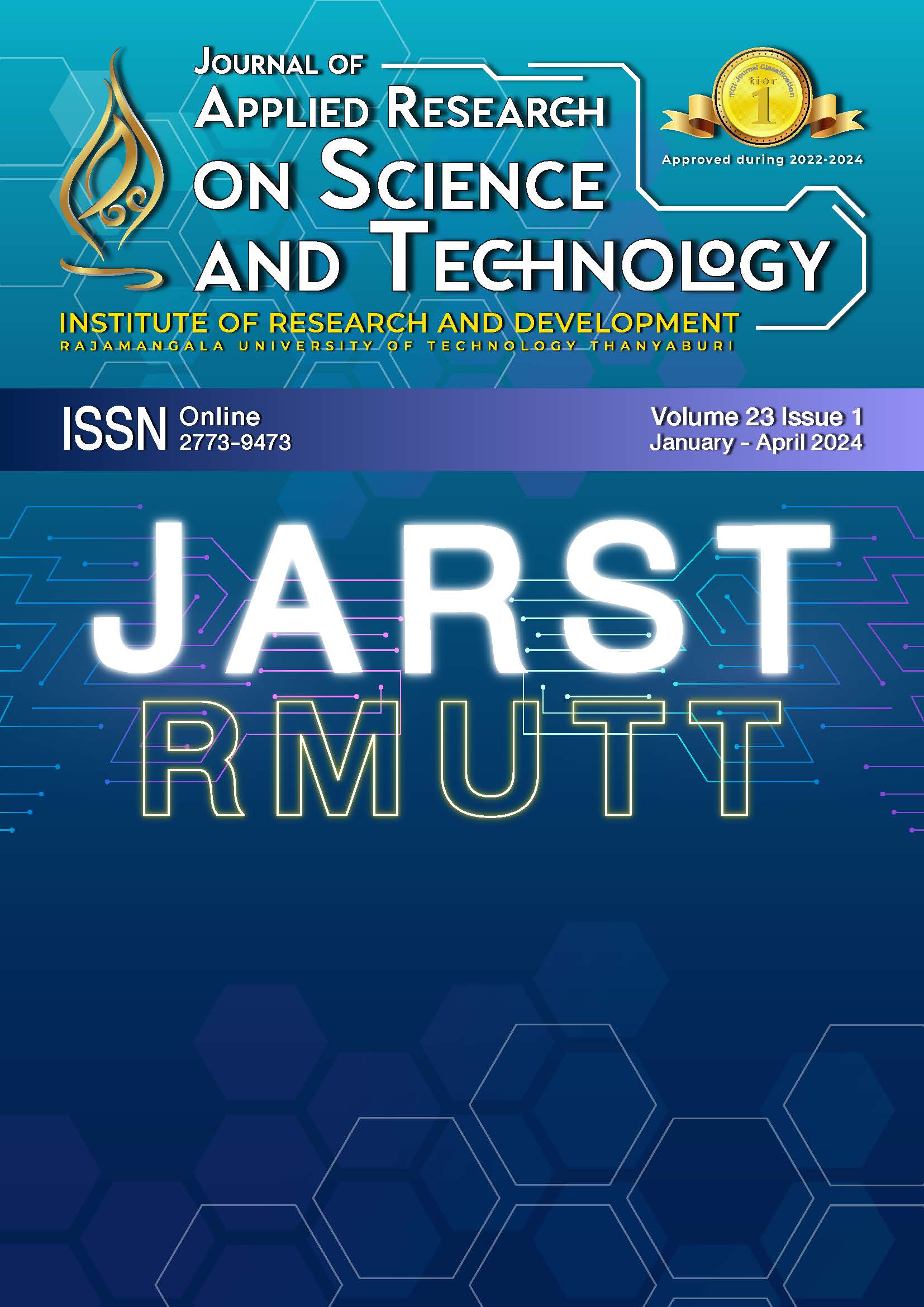WO3/Bi2WO6 photoanode enhancement for photoelectrocatalytic water oxidation; scan rate effect optimization in the cyclic voltammetry deposition method
Main Article Content
Abstract
The photoelectrocatalytic approach is a very efficient technology for eliminating microorganisms and organic contaminants. The development of photoanode is widely recognized as a crucial approach to enhancing the efficiency of photoelectrocatalytic cells. The key goal of this methodology is to enhance the efficacy of photoelectrocatalytic oxidation by optimizing composited photoanode fabrication. This research development focuses mainly on fabricating composite WO3/Bi2WO6 semiconductor thin films with high water oxidation efficiency and favorable photoelectrocatalytic E. coli degradation applications. Cyclic voltammetry was utilized to create WO3/Bi2WO6 thin coatings on conducting glass while optimizing the photoelectrocatalytic activity via the scan rate parameter. The characteristics of the developed electrode, including charge transfer resistance, optical properties, morphology, crystal structure, chemical composition, and oxidation numbers, were investigated to improve photoelectrocatalytic activity. It was observed that the scanning rate significantly influenced the characteristics of the WO3/Bi2WO6 electrode and the photoelectrocatalytic activity on water oxidation. It was discovered that the WO3/Bi2WO6 electrode prepared with a scan rate of 25 mV/s exhibited the greatest photoelectrocatalytic water oxidation as well as distinguishing characteristics from other conditions. The decision to utilize decreased scanning rates has been determined to optimize the reaction kinetics and improve the film-forming properties of WO3/Bi2WO6. Significantly, the developed electrode can also be used to eliminate 87.5% of E.coli in 15 minutes via a photoelectrocatalytic catalytic mechanism. The photoanode composed of WO3/Bi2WO6 has promising capabilities in removing microorganisms and organic pollutants, making it a viable candidate for future advancements in wastewater management applications.
Article Details

This work is licensed under a Creative Commons Attribution-NonCommercial-NoDerivatives 4.0 International License.
References
Voumard M, Breider F, Von Gunten U. Effect of cetyltrimethylammonium chloride on various Escherichia coli strains and their inactivation kinetics by ozone and monochloramine. Water Res. 2022;216:118278.
He H, Sun S, Gao J, Huang B, Zhao T, Deng H, et al. Photoelectrocatalytic simultaneous removal of 17α-ethinylestradiol and E. coli using the anode of Ag and SnO2-Sb 3D-loaded TiO2 nanotube arrays. J Hazard Mater. 2020;398:122805.
Zheng Z, Lo IMC. Fabrication of MoS2@BL-BiVO4 photoanode with promoted charge separation for photoelectrochemical sewage treatment to simultaneously degrade PPCPs, disinfect E. coli, and produce H2: Performance, mechanisms, and influence factors. Applied Catalysis B: Environmental. 2021;299:120636.
Srisawang N, Ngernchuklin P, Chaiyasat A, Chaiyasat P. Polymer microcapsules encapsulating photocatalyst nanoparticles for dye treatment in wastewater. J Appl Res Sci Tech. 2020;19(2):1-16.
Li G, Yang C, He Q, Liu J. Ag-based photocatalytic heterostructures: Construction and photocatalytic energy conversion application. Journal of Environmental Chemical Engineering. 2022;10(3):107374.
Liu J, Ma N, Wu W, He Q. Recent progress on photocatalytic heterostructures with full solar spectral responses. Chem Eng J. 2020;393:124719.
Koutavarapu R, Babu B, Reddy CV, Reddy IN, Reddy KR, Rao MC, et al. ZnO nanosheets-decorated Bi2WO6 nanolayers as efficient photocatalysts for the removal of toxic environmental pollutants and photoelectrochemical solar water oxidation. J Environ Manage. 2020;265:110504.
Sadhasivam S, Anbarasan N, Gunasekaran A, Sadhasivam T, Jeganathan K, Oh TH. Highly efficient In2S3 nanosphere decorated WO3/Bi2WO6 dual heterostructure nanoflake arrays for enhanced low bias watersplitting under visible light irradiation. Surfaces and Interfaces. 2023;39:102892.
Girish Kumar S, Koteswara Rao KSR. Tungsten-based nanomaterials (WO3 & Bi2WO6): Modifications related to charge carrier transfer mechanisms and photocatalytic applications. Appl Surf Sci. 2015;355:939-58.
Supanantin F, Ponchio C. WO3/BiVO4 photoanode electrode improvement for photoelectrocatalytic dye degradation. J Appl Res Sci Tech. 2020;19(1):16-26.
Ponchio C, Supanantin F, Petsaen N, Poowancum A. Photoelectrocatalytic oxygen production from water splitting using WO3 photoanode fabricated by dip coating technique. J Appl Res Sci Tech. 2019;18(1):52-9.
Zhang P, Teng X, Feng X, Ding S, Zhang G. Preparation of Bi2WO6 photocatalyst by high-energy ball milled Bi2O3-WO3 mixture. Ceram Int. 2016;42(15):16749-57.
Juodkazytė J, Petrulevičienė M, Parvin M, Šebeka B, Savickaja I, Pakštas V, et al. Activity of sol-gel derived nanocrystalline WO3 films in photoelectro-chemical generation of reactive chlorine species. J Electroanal Chem. 2020;871:114277.
Su X, Liu C, Liu Y, Yang Y, Liu X, Chen S. Construction of BiVO4 nanosheets@WO3 arrays heterojunction photoanodes by versatile phase transformation strategy. T Nonferr Metal Soc. 2021;31(2):533-44.
Supanantin F, Ponchio C. Improvement ITO/WO3 photo anode electrode fabrication using electrodeposition technique for highly efficient photoelectrocatalytic insecticide degradation. Mat Sci Semicon Proc. 2020;118:105212.
Orimolade BO, Idris AO, Feleni U, Mamba B. Peroxymonosulfate assisted photoelectrocatalytic degradation of pharmaceuticals at a FTO-Bi2WO6 electrode: Mechanism and kinetics studies. Catal Commun. 2022;169:106481.
Suryakant, Kumar N, Tripathi H, Kumar S, Bhardwaj S. Sol-gel synthesis of Tin oxide nanoparticles and their characterizations. Materials Today:Proceedings. 2023.
Shkir M, AlAbdulaal TH, Ubaidullah M, Reddy Minnam Reddy V. Novel Bi2WO6/MWCNT nanohybrids synthesis for high-performance photocatalytic activity of ciprofloxacin degradation under simulated sunlight irradiation. Chemosphere. 2023;338:139432.
Zhu Z, Yan Y, Li J. One-step synthesis of flower-like WO3/Bi2WO6 heterojunction with enhanced visible light photocatalytic activity. J Mater Sci. 2016;51(4):2112-20.
Peng Y, Chen Q, Wang D, Zhou H, Xu A. Synthesis of one-dimensional WO3-Bi2WO6 heterojunctions with enhanced photocatalytic activity. Cryst Eng Comm. 2015;17(3):569-76.


